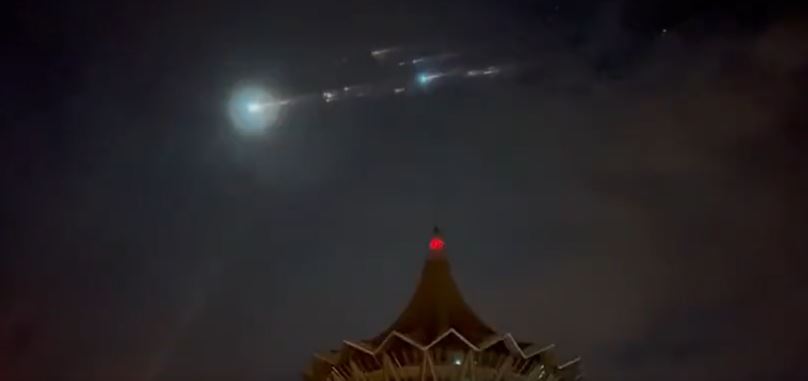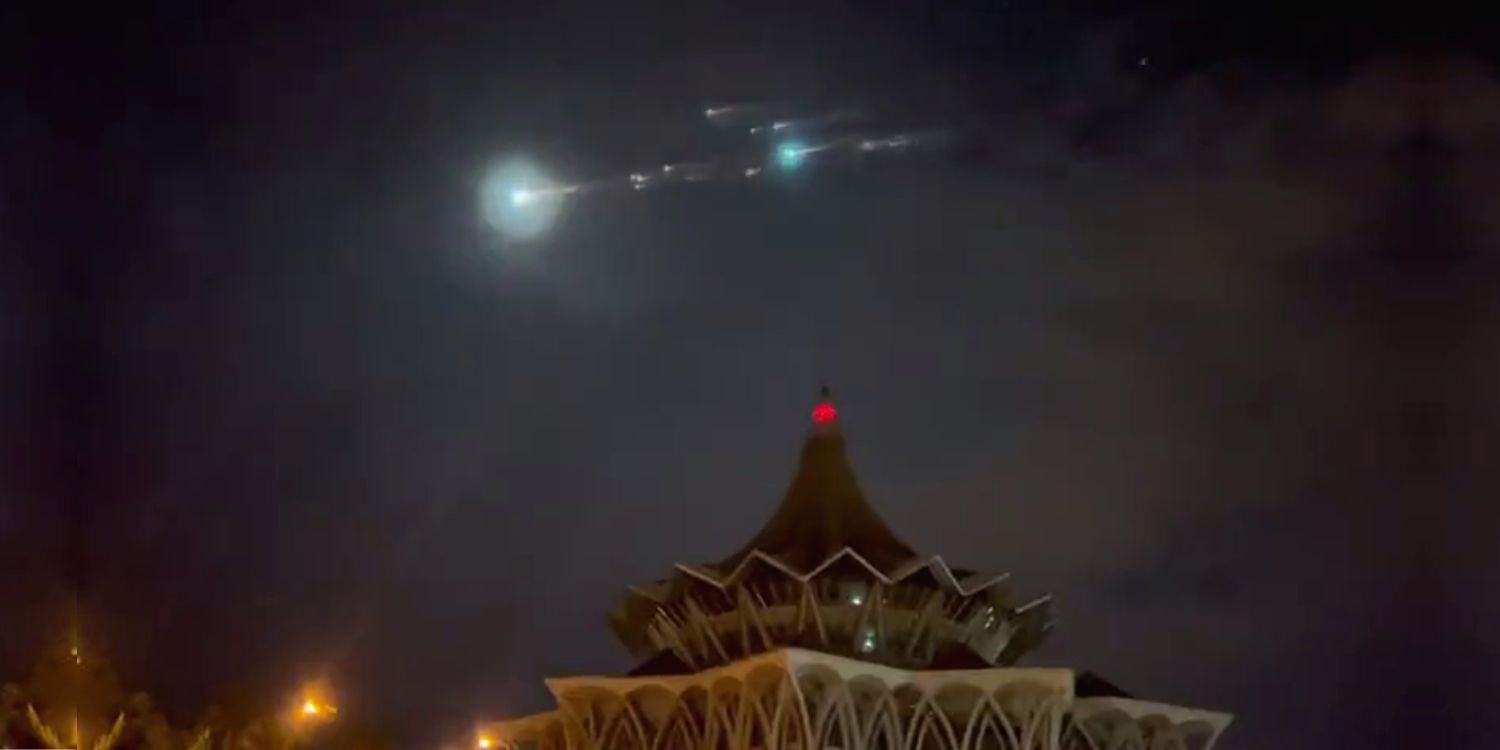Chinese Rocket Heads For Earth With Debris Spotted In Sarawak
Imagine looking up to the sky and seeing something startlingly bright flash across your vision. Most times, you may think it’s a shooting star.
However, if you were in Sarawak recently and witnessed a brilliant spark in the sky, it is actually debris from a Chinese rocket entering Earth’s orbit at breakneck speed.

Source: Twitter
And no, we’re not just narrating the plot of an absurd science fiction movie. Beijing’s Long March rocket has re-entered our world’s atmosphere and is currently on a fiery trajectory towards our shores.
Pieces of the debris have already landed in parts of the Indian Ocean, with no injuries reported.
Residents in East Malaysia – Sarawak, in particular – spotted the debris making its way over the skies recently, and analysts have predicted it to land in Brunei.
Debris of Chinese rocket spotted in Sarawak skies
Malaysian English daily The Star reports that on Sunday morning (31 Jul), many residents in various parts of Malaysia managed to spot the fiery debris from the rocket.
Kuching Sarawak.. meteor or apa pic.twitter.com/HJzN1zbOJ6
— hanifDaslepzz ➐ (@hanifDaslepzz) July 30, 2022
The footage has since gone viral on Twitter, almost resembling shooting stars across the sky. In one video, the trails of debris make their way over a tower in Sarawak, lighting up like fire.

Source: Twitter
The OP later stated that they were spare parts from the rocket. Residents in the area are to stay away from the scene, as there is radioactive radiation in the debris.
Many living nearby also reported hearing an explosion around 1.30am in the morning. He alleged that the debris could have fallen on the southern part of Sabah’s West Coast.
In another, the OP points out the trails in the sky while travelling in a vehicle, signifying the debris.
meteor spotted in kuching! #jalanbako 31/7/2022 pic.twitter.com/ff8b2zI2sw
— Nazri sulaiman (@nazriacai) July 30, 2022
Later on the same day, US Space Command tweeted that bits of debris from the rocket landed in parts of the Indian Ocean. The re-entry resulted in no injuries thus far.
Debris likely to land in Brunei
Astrophysicist and satellite tracker Jonathan McDowell from the Harvard-Smithsonian Center for Astrophysics said the debris might land in Brunei.
“The video from Kuching implies it was high in the atmosphere at that time,” he said.
Any debris would land hundreds of kilometres further along track, near Sibu, Bintulu or even Brunei.
He added that it’s “unlikely but not impossible” that one or more chunks would hit a population centre.
Previously, the Malaysian Space Agency said it was unlikely for the debris to land in Malaysia.
“The location of the re-entry of the debris can’t be predicted accurately until a few hours prior to re-entry,” the agency said in a statement on Friday (29 Jul).
They added that in many cases, changes in the object’s physical characteristics at re-entry, such as location and speed, make these predictions difficult.
Most of the debris would also burn when re-entering Earth’s orbits, with only smaller fragments landing on the ground.
“As such, the public need not be concerned about the dangers as 70% of it was water and Malaysia was a small entity compared to Earth’s mass area,” the agency assured residents.
According to Channel NewsAsia (CNA), the Long March set off on 24 Jul to deliver a laboratory module to a new Chinese space station under construction in orbit.
The Chinese embassy in Washington said they are closely tracking the debris. They have also affirmed that it is unlikely for the falling debris to result in any injuries.
Hopefully, no casualties will occur from crash of debris
It is undoubtedly unnerving to see this event unfold in real time as we wonder where the debris might land.
However, multiple agencies have confirmed that the crash of the debris is not likely to result in many casualties.
As such, the fallout from the rocket hurtling towards earth may not be too severe — or at least, one can hope.
Have news you must share? Get in touch with us via email at news@mustsharenews.com.
Featured image adapted from Twitter.

Drop us your email so you won't miss the latest news.







